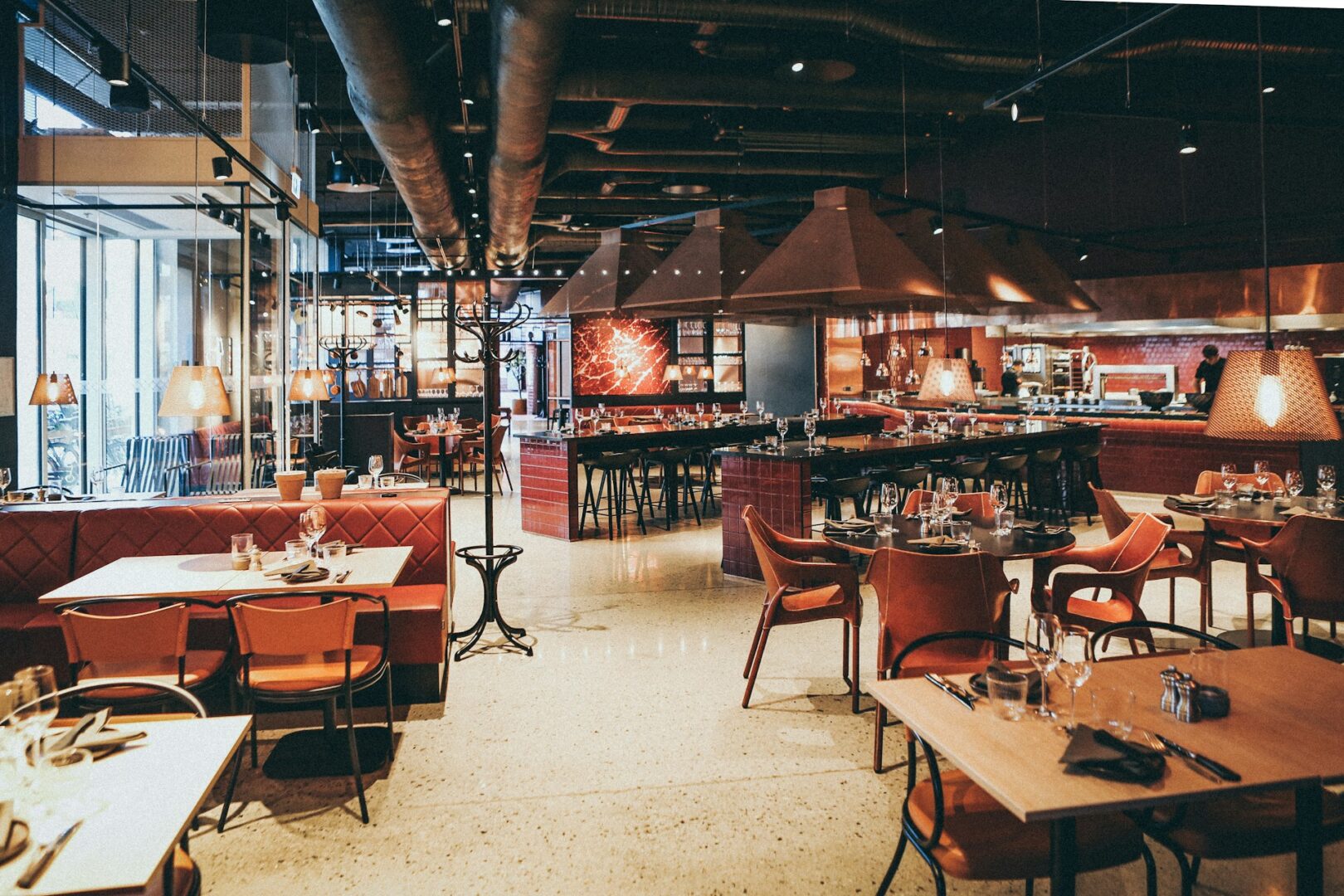Technology is growing at a stupefying rate, with computer speeds doubling every year and a half to two years over the last few decades. Its impact on day-to-day life is undeniable, seemingly as a catalyst for society’s rising desire for instant gratification. What’s more interesting is the power of technology itself in addressing this need.
Restaurateurs, in particular, view technology as a critical strategy for enhancing efficiency, improving customer experience, and staying competitive. In this comprehensive checklist, we enumerate the essential areas of a restaurant business that benefit from this digital phenomenon.
From software solutions to hardware upgrades and strategic frameworks, we will discuss all the tools necessary to make a restaurant thrive beyond the traditional principles of hospitality and operations.
Point of Sale (POS) Systems at the Heart of Digital Transformation
The starting point for any restaurant on a digital transformation journey is a robust point of sale (POS) system. The best POS system for restaurant businesses goes beyond basic transaction processing and offers a range of features to streamline operations.
Cloud-based POS
Implementing a cloud-based POS system allows restaurateurs to access critical data from anywhere, facilitating remote management. The real-time updates enable better decision-making and provide a trouble-free experience for both staff and customers.
Order management and integration
A POS system that freely integrates with online ordering platforms and kitchen display systems is indispensable in reducing order errors, speeding up service, and ensuring a smooth kitchen workflow.
Payment processing
POS systems that support multiple payment methods, such as contactless and mobile payments, enhance customer convenience and establish the business as technologically advanced.
Reservation and Table Management Software for Efficient Seating Arrangements
Managing reservations and table turnover is crucial for increasing revenue and improving customer experience. Digital solutions in this area help streamline the reservation process and optimize table assignments.
Reservation platforms
Reservation platforms offer online reservation management, allowing customers to book tables easily. These tools also help restaurateurs keep track of reservations, reduce no-shows, and optimize table allocation.
Table management
Implementing digital table management tools ensures efficient seating arrangements, reducing wait times and improving customer satisfaction. Visualizing the restaurant layout and tracking table status helps staff make better-informed decisions.
Inventory Management Systems for Reducing Waste and Controlling Costs
Every successful restaurant operation relies heavily on effective inventory management. Digital solutions in this category assist in monitoring stock levels, preventing wastage, and controlling costs.
Real-time tracking
Inventory management systems offering real-time tracking of stock levels keep the kitchen well-stocked, minimize the risk of essential item shortages, and prevent over-ordering.
Cost control and reporting
Digital inventory systems provide detailed reports on usage patterns and costs, enabling restaurateurs to identify areas for cost reduction. Analyzing this data empowers decision-makers to negotiate better deals with suppliers and optimize menu pricing.
Employee Scheduling and Communication Tools for Streamlining Operations
Efficient workforce management is vital in a dynamic industry like hospitality. Digital tools for employee scheduling and communication enhance coordination, reduce errors, and improve staff productivity.
Scheduling software
Scheduling software automates the scheduling process, taking into account employee availability, labor laws, and anticipated business trends. This tool ensures optimal staffing levels and reduces the risk of understaffing or overstaffing.
Communication platforms
Communication platforms streamline internal communication by facilitating real-time message exchanges. It reduces reliance on back-and-forth emails and improves overall team collaboration.
Customer Relationship Management (CRM) Systems for Personalizing the Dining Experience
Building and maintaining solid customer connections is essential in a competitive market. CRM systems allow restaurateurs to gather valuable customer data, personalize interactions, and foster loyalty.
Customer data collection
CRM systems gather and analyze customer data, including preferences, order history, and feedback. This information helps create targeted marketing campaigns and tailor promotions to specific customer segments.
Loyalty programs
Integrate digital loyalty programs with CRM systems to reward repeat customers. These programs can be tailored to individual preferences, offering personalized discounts and incentives to enhance customer loyalty.
Kitchen Display Systems (KDS) for Enhancing Kitchen Efficiency
Efficient communication between the front and back of the house is crucial for a hassle-free dining experience. Kitchen Display Systems (KDS) replace traditional paper tickets, reducing errors and improving kitchen efficiency.
Order accuracy
Implementing a KDS minimizes the risk of miscommunication between the front and back of the house. Digital displays ensure that kitchen staff have clear and accurate information about each order, reducing the likelihood of errors.
Expedited service
By streamlining the order process, KDS helps expedite service, reducing customer wait times. This is particularly crucial during peak hours when a smooth workflow in the kitchen is essential for maintaining high service standards.
Online Presence and Marketing for Embracing the Digital Marketplace
Establishing a strong online presence is a make-or-break proposition in the age of online ordering and food delivery platforms. Digital marketing tools and strategies help restaurants reach a wider audience and increase visibility.
Mobile-friendly website
According to Forbes, 67 percent of users are likelier to purchase from a website that works seamlessly on their mobile devices. Successful restaurant websites are usually mobile-friendly, with an intuitive interface for online reservations, menu browsing, and contact information. The result is enhanced user experience and access to the increasing number of customers using mobile technology.
Social media marketing
Social media, such as Instagram and Facebook, are undeniably crucial to connecting with an audience today. Sharing visually appealing content, engaging with followers, and promoting special offers are all proven techniques for building a strong online community around a restaurant brand.
Data Security and Compliance for Safeguarding Customer Information
Ensuring customer data safety is critical as digital tools become integral to restaurant operations. Adhering to data protection regulations and implementing cybersecurity measures safeguard the business and its patrons.
Payment security
Successful restaurants usually invest in secure payment processing systems that meet Payment Card Industry Data Security Standard (PCI DSS) requirements. This technology ensures that customer payment information is protected, reducing the risk of financial fraud.
Customer privacy
Data protection measures are a must for safeguarding a restaurant’s customer information. This includes communicating the business’s privacy policy to customers and obtaining consent for data collection. Additionally, it requires regularly updating security protocols to avoid potential threats.
Training and Development Platforms for Upskilling the Workforce
Digital transformation extends to staff training and development, ensuring employees have the necessary skills to adapt to evolving technologies and industry trends.
E-learning platforms
Integrate e-learning platforms to provide staff with convenient access to training materials. These platforms offer flexibility regarding when and where employees can engage in learning activities, reducing disruptions to daily operations.
Skill development programs
Digital skill development programs enhance the expertise of a restaurant’s employees, from beating the clock in serving delicious food to taking Instagram-worthy pictures to practicing innovative plating techniques and improving service responsiveness.
Analytics and Business Intelligence for Informed Decision-Making

Harnessing the power of data analytics and business intelligence tools helps restaurateurs make educated decisions, optimize operations, and stay ahead of market trends.
Performance metrics
Analytics tools track key performance indicators (KPIs) such as sales, customer satisfaction, and employee productivity. This data enables a comprehensive understanding of the business’s strengths and areas for improvement.
Market trends
Business intelligence tools help restaurants stay ahead of industry movements by analyzing market data. Understanding customer preferences and emerging patterns helps adjust menus, marketing strategies, and overall business positioning.
Conclusion
Maximizing digital tools is crucial for today’s restaurants and transcends trends and market adaptability. With the help of the comprehensive checklist proposed above, restaurants can stay competitive and provide customers with a more efficient, personalized dining experience.
As the hospitality landscape evolves, integrating these digital solutions becomes critical to shaping restaurant success and ensuring longevity in the volatile food industry.




